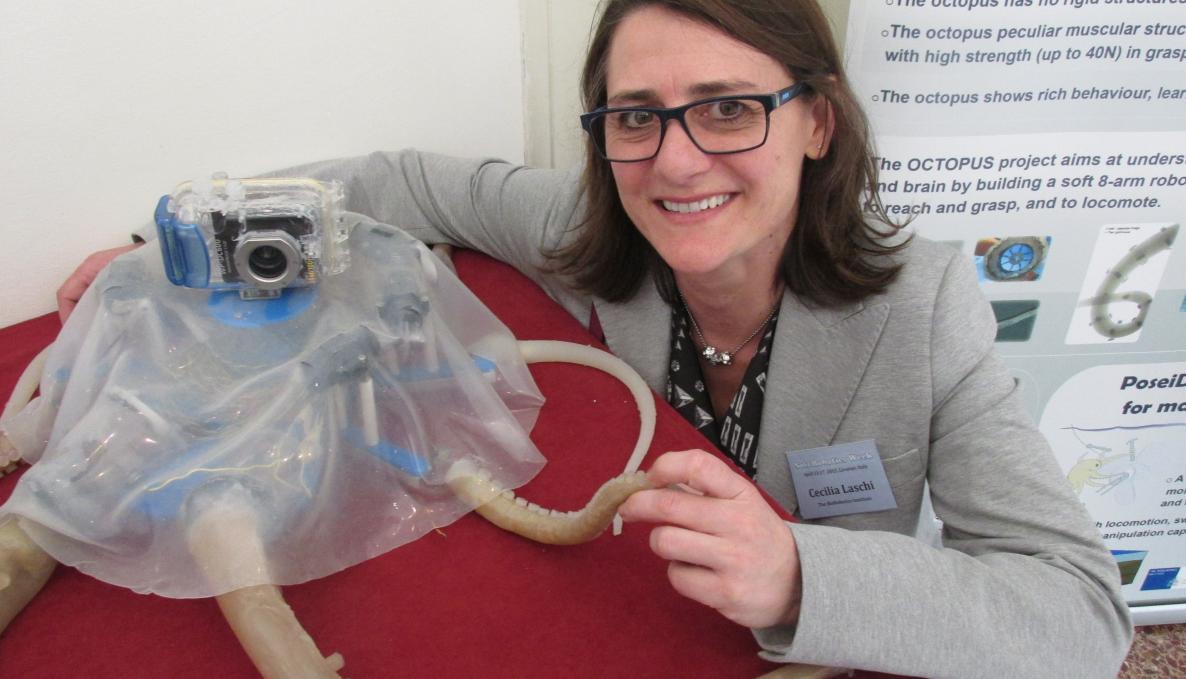The robotics of the future is soft: "Nature" magazine publishes the article on researches of the BioRobotics Institute

Octopus, caterpillars, fish and jellyfish: soft Robotics had a great development in recent years. Compared to rigid and metal robots, soft robots open a new frontier in scientific research.
“We try to apply the principles of soft robotics to produce robots to serve people,” Cecilia Laschi, Professor at the Biorobotics Institute of Sant’Anna School of Advanced Studies, says. "The forms and functions of soft robots can be multiple because it’s possible to build robots that can perform different actions".
One of the first areas of development is the medicine. The bioengineers have created an soft endoscope and the first artificial vocal chords.
Cecilia Laschi says: "We are working on simulators of the human body. In recent months we have begun with the larynx and vocal cords". They aren't prosthesis, but models that help doctors to simulate certain diseases.
It is not difficult to imagine the development of soft robots in the coming years. Again Laschi says: “I guess robots with soft parts, more similar to the animals and to humans, in a convergence between traditional Robotics and the use of soft materials”.
Soft Robotics is a discipline studied in many international research centers. In the United States researchers have made robotic fingers with soft materials. The aim is to regulate the pressure of your hand through elastic sensors that can also be useful for future wearable electronics.
One of the goals of the research of the Biorobotics Institute is the realization of long flexible hoses, shaped like a trunk, that can help old men to have a shower.
“The idea” Cecilia Laschi says, “is to install the flexible hose directly to the wall for spraying water and detergent. Its name is I-support, an European project involving the Biorobotics Institute of Sant’Anna School of Advanced Studies.



